A winter flower oracle for hope, soft strength and renewal.
winter's floral oracle, finding hope, soft strength and renewal with flower love and lore.
Hello, I am so glad you have found your way here… I’m Lyndsay — mother, creative and storyteller with a background in interiors PR.
Step inside Story & Thread., a cosy, layered home where the threads of creativity, interiors and mothering meet. Here, we unearth the stories from the seasons of our lives, with a house & a garden at the heart, and everyday beauty as our guide…
“There are always flowers for those who want to see them.”
—Henri Matisse.
Dearest reader…
I am writing to you a day or two later than planned after a whirlwind final week of January, wrapped up in my daughter’s 5th birthday. The house is filled with pancakes, cupcakes topped with edible flowers, fairy bread, jelly, chocolate cake and birthday candles this weekend as we celebrate, and there has been quite a build up!
Her birthday always feels special to me, for obvious reasons, but also as it falls on 31st January, a date I like to call Imbolc Eve — the day before the Celtic cross-quarter festival of Imbolc, honouring the stirrings of new life and the slow, steady return of the light.
We will be exploring more of the soft shimmers and buds of potential at A Seasonal Salon. for winter — a creative online gathering, at 10am GMT this coming Wednesday 5th February 2025. We will weave together seasonal reflections, poetry and prose, flowers and folklore in order to anchor and soften into the season, as we create time and space to notice, and take cues from the beauty that surrounds us…
A Seasonal Salon. is open to members of The Beauty Thread. Currently there is a 30-day free trial available which will give you access to the full membership for the rest of this season, including A Storied Home. guide to creating a cosy cocoon in winter, and a place at A Seasonal Salon. for winter — you would be so welcome to join us.
Today, I am writing to you about the flowers catching my eye (and heart) in these days of late winter — all of which are bound by their beauty within the darkness, and as symbols of hope as we begin to shift slowly into the light.
The flower oracle — a spread for winter.
hellebore | snowdrop | primrose.
hope | soft strength | renewal.
Winter in the garden.
Being out in the garden has been one of my greatest joys this winter. After leaving it to unravel of its own accord for much of autumn, being back in the garden has renewed me.
Early winter saw me clearing old growth and planting new bulbs into the ground. Now in late winter, I can sense the second layer of cutting back to do — more ivy needs stripping away from the back fence, as well as the careful pruning of the wisteria, in order to encourage its annual May flourish.
Despite the work still to do, there is space on ground level, though it is rapidly filling up with fresh green shoots — each bringing a hint of anticipation for the seasons ahead. Small clusters of snowdrops have opened their pearlescent petals; shy hellebores bring unexpected colour to shady corners; and wild primrose leaves in the corner of our grass promise the pale yellow light to come.
My triptych of winter flowers embody feelings of hope, optimism and renewal with an underlying sense of soft strength — all qualities that call me in these late winter days…
Messages from winter flowers…
Hellebore — hold onto hope, beauty blooms in the darkness.
“And there is a flower that strangely loves the bitterness of winter and blooms through the crystal of ice. It is the Christmas Rose, with a history worth telling…”
—Arthur E. and Mildred V. Luedy, The Christmas Rose, 1948.
Hellebore, botanical name Helleborus, in the family Ranunculaceae. It is thought that the name hellebore derives from the Ancient Greek words ἑλεῖν heleîn, ‘to injure’ and βορά borá, ‘food’ due to the toxic compounds found within the plant. The hellebore is often also called the winter rose, snow rose and Christmas rose due to its winter flowering time, or the Lenten rose (for the species that flower later in the spring).
Hellebores are intricate nodding flowers in shades of green, white, pink and dusky purple that bloom in winter. They are steeped in folklore and symbolism, with meanings ranging from protection and warding off evil, to some darker connotations owing to its toxicity, but also to rebirth and new beginnings — they are most often seen to be flowers that are brimming with hope.
Another name for the hellebore is the oracle rose — it was once used to predict the weather for the coming year, an open bloom indicating fair weather and a closed bud predicting poor conditions. Whether or not the hellebore can reliably forecast the weather, it is certainly true that the flower embodies both the melancholy of winter and that of primaveral promise.
I first discovered the hellebore in the first wintry months of 2020 after giving birth to my daughter on the last day of January five years ago. The sight of them will always be entwined with this otherworldly time with my first winter baby. They provided a glimpse of much-needed beauty and optimism when I was immersed in the underground process of entirely reorienting myself in symbiosis with my daughter.
We are lucky to have hellebores in our garden, one that I brought with me in a pot to plant in the ground, and the rest grow in clumps of dark green and ballerina pink in the shadier corners. Their unassuming downward-facing petals intrigue me every time I glimpse them — their full form breathtaking in the starkness of winter.
The hellebore invites us to hold onto hope in the quieter, darker times of often unseen growth. Their ability to bloom amid winter’s hold on much of the living world symbolises resilience, and the promise of brighter, more easeful days to come.
To me, the hellebore is the embodiment of inner beauty, its intricate patterning, palette and form a secret to much of the world passing by. The flower signifies the importance of taking time for introspection in the darker months whilst holding hope firmly in our hands, as a necessary part of the process of growth and rebirth, creating deeper foundations for an enduring bloom.
*What do you hope for? Where can you find hope in winter/darker times?
You can read more about the hellebore below,
Snowdrop — trust in soft strength.
“I’ve brought some snowdrops; only a few
But quite enough to prove the world awake
Cheerful and hopeful in the frosty dew
And for the pale sun’s sake”.
—Christina Rossetti.
Snowdrop, botanical name Galanthus nivalis, in the family Amaryllidaceae. Galanthus is derived from the Greek γάλα ‘gala’, meaning ‘milk’ and ἄνθος ‘anthos’ meaning ‘flower’. The epithet nivalis is derived from the Latin, meaning ‘of the snow’, meaning that Galanthas nivalis is ‘milk flower of the snow’, referring to the colour of the bloom and its flowering time.
Galanthus nivalis is the best-known and most widespread example of the genus Galanthus and is native to a large area of Europe and the Middle East, not Britain as is often assumed. They are thought to have been introduced to the UK as an ornamental garden plant in the 16th century.
The plants have two linear leaves and a single, small white drooping bell-shaped flower with six petal-like tepals in two circles (whorls). The tips of their leaves are especially hardened for breaking through frozen ground and their sap contains a form of antifreeze that prevents ice crystals from forming. Traditionally it was thought that their green stem brought a hue of healthful revival, whilst the white represented the growing strength of the winter sun.
From ancient stories of the Garden of Eden; to the Greek myth of Persephone carrying snowdrops from the underworld each spring; German folk tales about the snowdrop gifting snow its colour; and Celtic lore about the Winter Goddess’ hatred of snowdrops for signalling the end of her reign — the snowdrop has been a source of curiosity and meaning across the world for thousands of years.
Snowdrops appear in our garden in clusters of bell-shaped lamps, emerging between my children’s birthdays in January. Tiny luminous lanterns adding to the strengthening light that is palpable as we reach February. The porcelain petal-like forms appear seemingly out of nowhere against the murky, muted palette of a garden in winter, and I am spellbound by the small promises of what is come.
The snowdrop or the ‘milk flower of the snow’ will always remind me of the milky winter cocoon surrounding me following the births of both of my children. The flower is inscribed deeply within me and now on my skin in the form of a fine-line tattoo, representing my two winter babies, the infinite layers of my unfolding mothering experience, and the coexisting truths of delicacy and fortitude, softness and strength within my ever-expanding winter heart.
The snowdrop is a flower of deep ritual and remembering, it invites us to pause and sense that life is indeed stirring below the soil. The rich symbolism of snowdrops extends into the world of literature and art, often representing a gentle yet persistent life force.
While some see the snowdrop as the first signifier of spring, to me they are one of the few brave flowers of winter. Despite their diminutive size and their delicate appearance, their ability to emerge through the cold earth and withstand snow and frost, (giving them their name in French, ‘pierce-neige’, snow piercer), alludes to their soft strength, inviting us into our own.
*How does it feel to soften? Where can you benefit from calling on soft strength?
You can read more about the snowdrop here,
Primrose — a time to feel renewed.
"An opening primrose seemed to me
A source of strange delight."
—Anne Brontë.
Primrose, botanical name primula vulgaris, in the family Primulaceae. The common name is derived from Middle English primerose, from Old French primerose, from Medieval Latin prima ‘first’ + rosa ‘rose’ (despite not being from the rose family at all).
One of February’s birth flowers, the primrose is a small perennial that can be found in woodland, hedgerows and meadows — flowering from December to May. Wild primroses are a native flower in Britain and Europe, and are an indicator of ancient woodland.
The exact origin of the primrose is unknown but they have been known and admired since antiquity. They became known as the ‘English primrose in the 16th century and the Swedish botanist Linnaeus formally described them as a genus in 1753. Over the years the primrose has taken on different charming regional names in England — butter rose, early rose, Easter Rose, golden rose and Lent rose.
All parts of the flower are edible (although toxic for animals) — historically the leaves, roots and petals were used in tea, poultice or ointment form to treat wide-ranging ailments from cramps and coughs to aches, pains and insomnia. In Ireland, it was also used to ease toothache.
The primrose has been considered a magical flower for centuries, a belief perhaps rooted in its healing properties. In rural England they are also known as ‘fairy cups’, due to the belief that fairies dwell in the yellow flowers. Ancient Celtic wisdom deems a large patch of primroses to be a portal into the fairy realms. It was thought that eating a primrose (or rubbing its oil on your eyelids) would lead to fairy sightings. Leaving primroses on your doorstep would encourage a fairy blessing, whilst leaving a posy of 13 primroses would protect from evil spirits.
The primrose also symbolises femininity, with each of the five petals representing a different stage of a woman’s life. The primrose has also been linked to goddesses through the millennia — the Romans associated the flower with both Flora, and Venus, the goddess of love and beauty, (they are also said to be sacred to her counterpart, Aphrodite in Greek myth). In Celtic folklore, the flower is associated with Brigid, the goddess of rebirth, with bunches being offered to her in early February, to mark Imbolc, the cross-quarter festival marking the first stirrings of spring. Welsh stories tell of Olwen, who was made out of flowers, one of them being the primrose. In Norse mythology, primroses were laid on altars to Freya, the pale yellow colour said to signify her radiant demeanour.
A tuft of primroses has emerged in a corner of the grass in our garden, the pale yellow flowers signify to me a shift in the colour palette, away from the muted shades of winter towards the uplifting sorbet tones of spring-time.
This year, I have noticed so many primroses in the front gardens of houses nearby. I look forward to sprinkling a touch of magic on our daily walks to and from school, by telling my children that each cluster could be home to a fairy, and is quite possibly a gateway to their enchanting realm.
The primrose has long represented youthfulness and optimism owing to its early appearance in the garden. Again, some associate the primrose with spring but as it appears first in the midst of winter, the primrose feels like a gift of the pale, lemon sunlight that is growing in strength.
The primrose represents renewal within the growth cycle, and invites us to examine what needs to be renewed with a dose of freshness and a dash of magic…
*Where do you feel stagnation? What allows you to feel renewed?
Thank you so much for reading. I would love to know which winter flower you are drawn to and to chat more in the comments, or of course feel free to send me an email, it is always lovely to hear from you.
P.S. If you fancy any further winter reading, do check out my recent posts below, including the first edition of A Storied Home, a gentle guide to creating a cosy cocoon in winter…
Late winter is for softness, shoots, shimmers and spell-casting.
Hello, I am so glad you have found your way here… I’m Lyndsay — mother, creative and storyteller with a background in interiors PR.
Re-writing January, one day at a time.
Hello, I am so glad you have found your way here… I’m Lyndsay — mother, creative and storyteller with a background in interiors PR.
Unwrap winter magic and meaning in these lingering liminal days.
Hello, I am so glad you have found your way here… I’m Lyndsay — mother, creative and storyteller with a background in interiors PR.
Sharing the secrets of a midwinter garden.
Hello, I am so glad you have found your way here… I’m Lyndsay — mother, creative and storyteller with a background in interiors PR.
Introducing A Storied Home, in winter.
Hello, I am so glad you have found your way here… I’m Lyndsay — mother, creative and storyteller with a background in interiors PR.









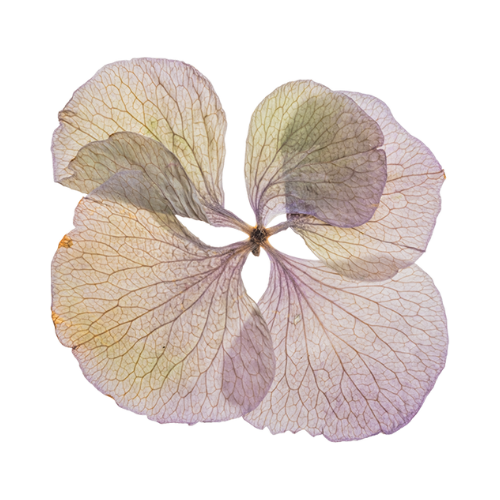

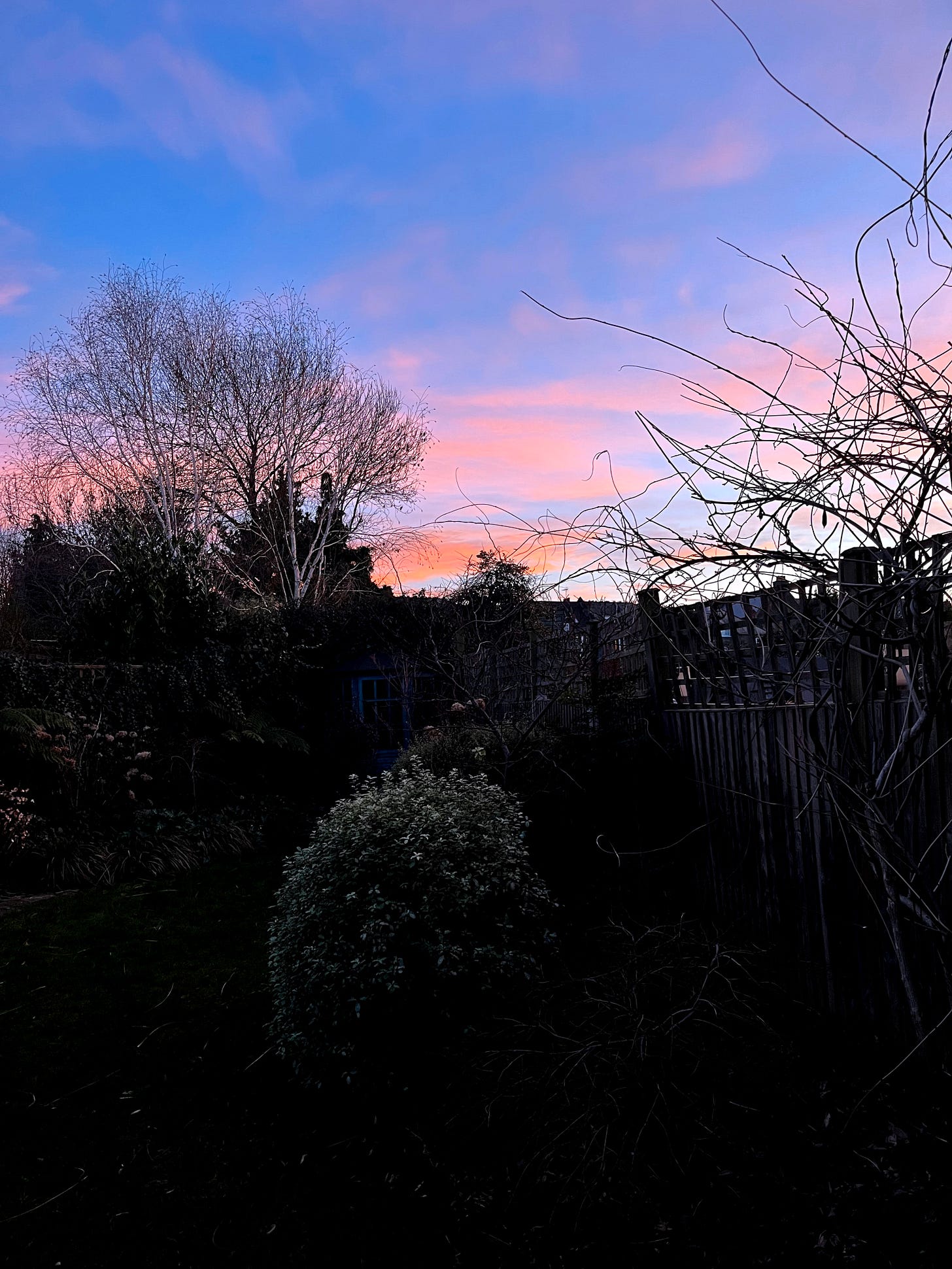
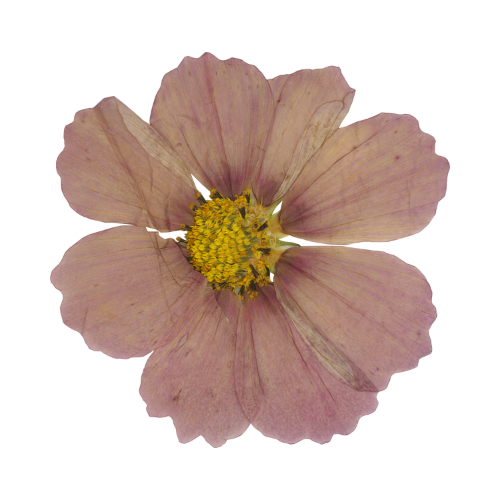
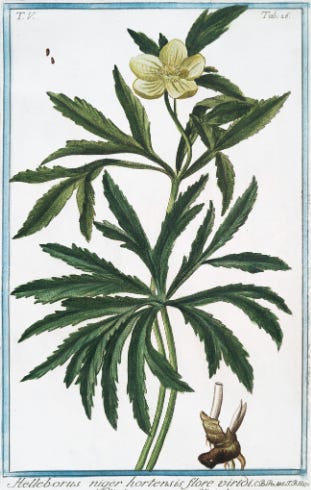




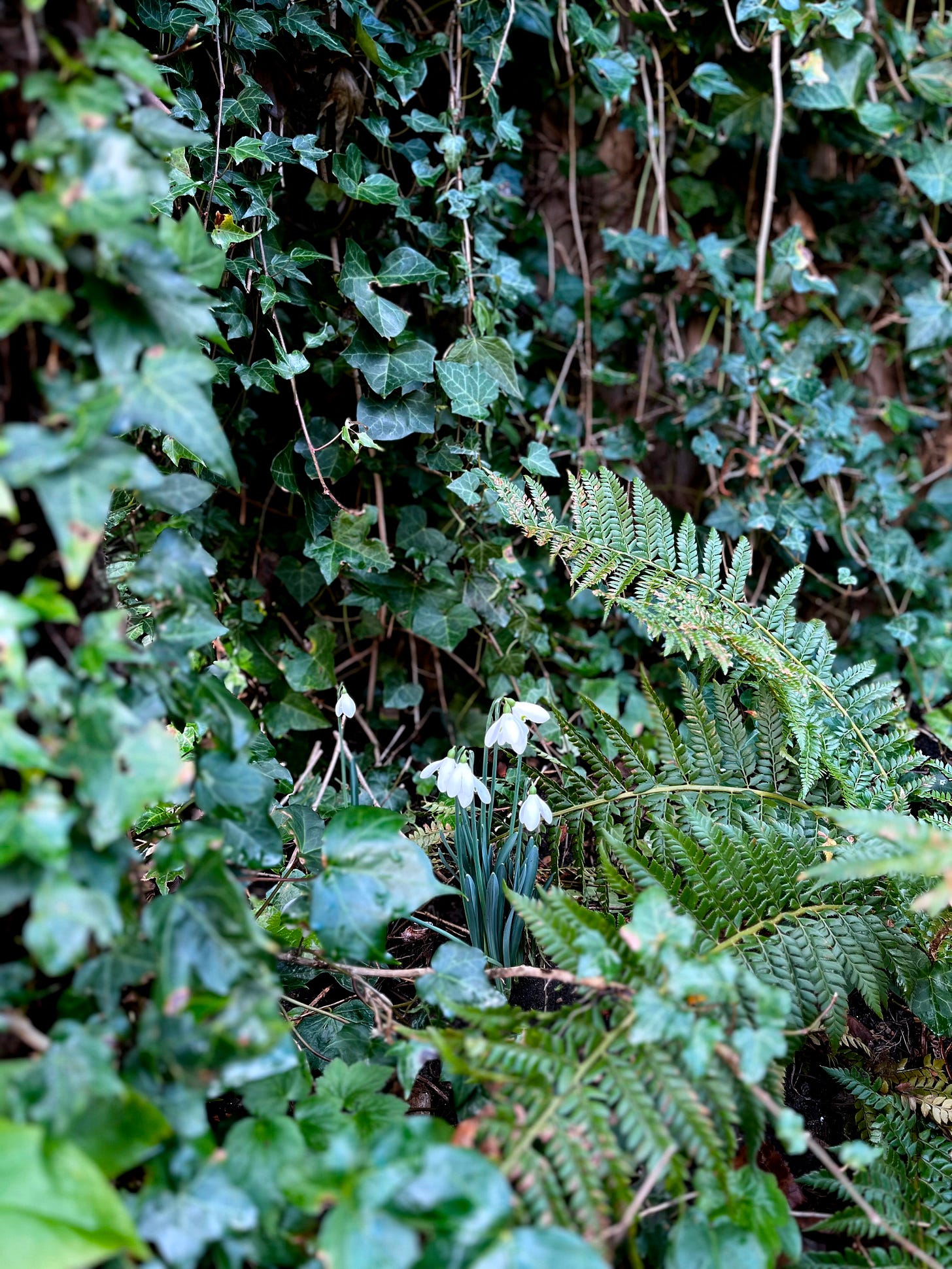











Lovely read. I must see what our hellebores are up to out there…
Such a joy to see the garden coming to life again 🙏🌿